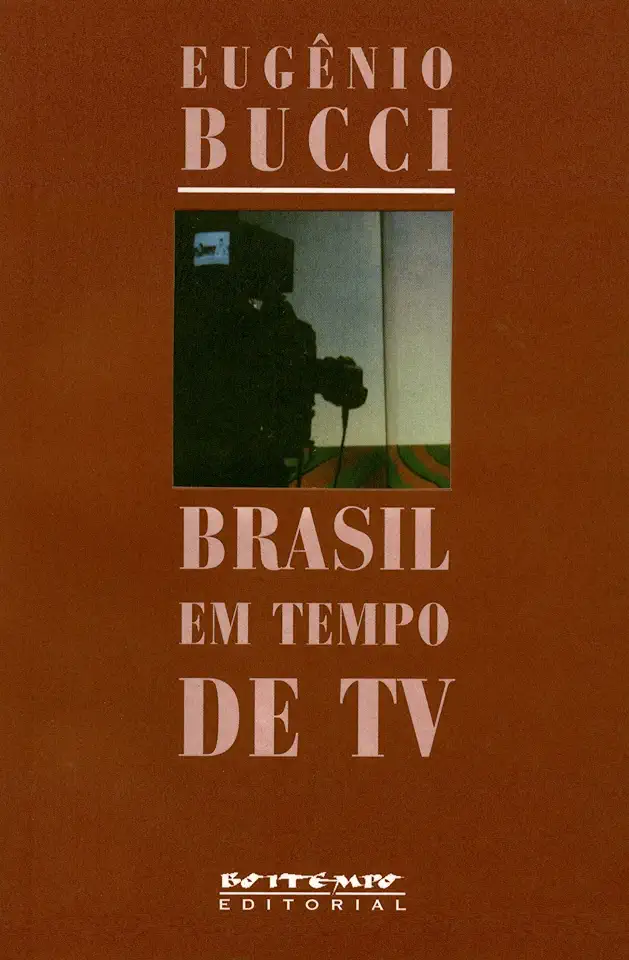
Brazil in TV Time - Eugenio Bucci
Brazil in TV Time: A History of Brazilian Television
Introduction
Brazil is a country with a rich and vibrant television history. From the early days of black-and-white broadcasts to the present day of high-definition programming, Brazilian television has played a vital role in shaping the country's culture and society.
In this book, Eugenio Bucci takes readers on a journey through the history of Brazilian television, from its humble beginnings to its current status as a global powerhouse. Along the way, Bucci explores the major events, personalities, and programs that have shaped Brazilian television, and he provides a unique perspective on the role that television has played in Brazilian society.
The Early Years
The history of Brazilian television begins in the early 1950s, when a group of pioneers began experimenting with television broadcasting. The first television station in Brazil, TV Tupi, was founded in 1950, and it was soon followed by other stations in Rio de Janeiro and São Paulo.
In the early years, Brazilian television was heavily influenced by American programming. American shows such as "I Love Lucy" and "The Ed Sullivan Show" were hugely popular in Brazil, and they helped to shape the country's television culture.
The Golden Age of Brazilian Television
The 1960s and 1970s are considered to be the golden age of Brazilian television. During this time, Brazilian television produced some of its most iconic programs, including the telenovelas "O Bem-Amado" and "Gabriela."
Telenovelas are a type of soap opera that is popular in Brazil and other Latin American countries. Telenovelas typically tell the stories of love, betrayal, and revenge, and they are often set against the backdrop of Brazilian society.
The telenovela "O Bem-Amado" was one of the most popular telenovelas of all time. It aired on TV Globo from 1973 to 1974, and it told the story of a small town in the Brazilian countryside. The telenovela was a huge success, and it helped to launch the careers of several Brazilian actors and actresses.
The telenovela "Gabriela" was another popular telenovela of the 1970s. It aired on TV Globo from 1975 to 1976, and it told the story of a young woman who moves to a small town in the Brazilian countryside. The telenovela was a huge success, and it helped to launch the career of Brazilian actress Sonia Braga.
The Decline of Brazilian Television
The 1980s and 1990s saw a decline in the quality of Brazilian television. This was due in part to the rise of cable television, which gave viewers more options for programming. Additionally, the Brazilian government began to regulate the television industry more heavily, which made it more difficult for independent producers to create new programs.
As a result of these factors, Brazilian television began to lose its edge. American programming once again became more popular than Brazilian programming, and Brazilian television began to lose its unique identity.
The Present Day
In the 21st century, Brazilian television has begun to experience a resurgence. This is due in part to the rise of streaming services, which have given viewers more access to Brazilian programming. Additionally, the Brazilian government has begun to relax its regulations on the television industry, which has made it easier for independent producers to create new programs.
As a result of these factors, Brazilian television is once again producing some of its best programming. Telenovelas are still popular, but there are also a number of other genres of programming that are being produced, such as comedies, dramas, and reality shows.
Brazilian television is once again a vibrant and exciting industry, and it is sure to continue to produce great programming for years to come.
Conclusion
Brazil in TV Time is a comprehensive and well-researched history of Brazilian television. Bucci provides a unique perspective on the role that television has played in Brazilian society, and he offers a wealth of information about the major events, personalities, and programs that have shaped Brazilian television.
This book is a must-read for anyone who is interested in the history of Brazilian television. It is also a great resource for anyone who is interested in learning more about Brazilian culture and society.
Enjoyed the summary? Discover all the details and take your reading to the next level — [click here to view the book on Amazon!]